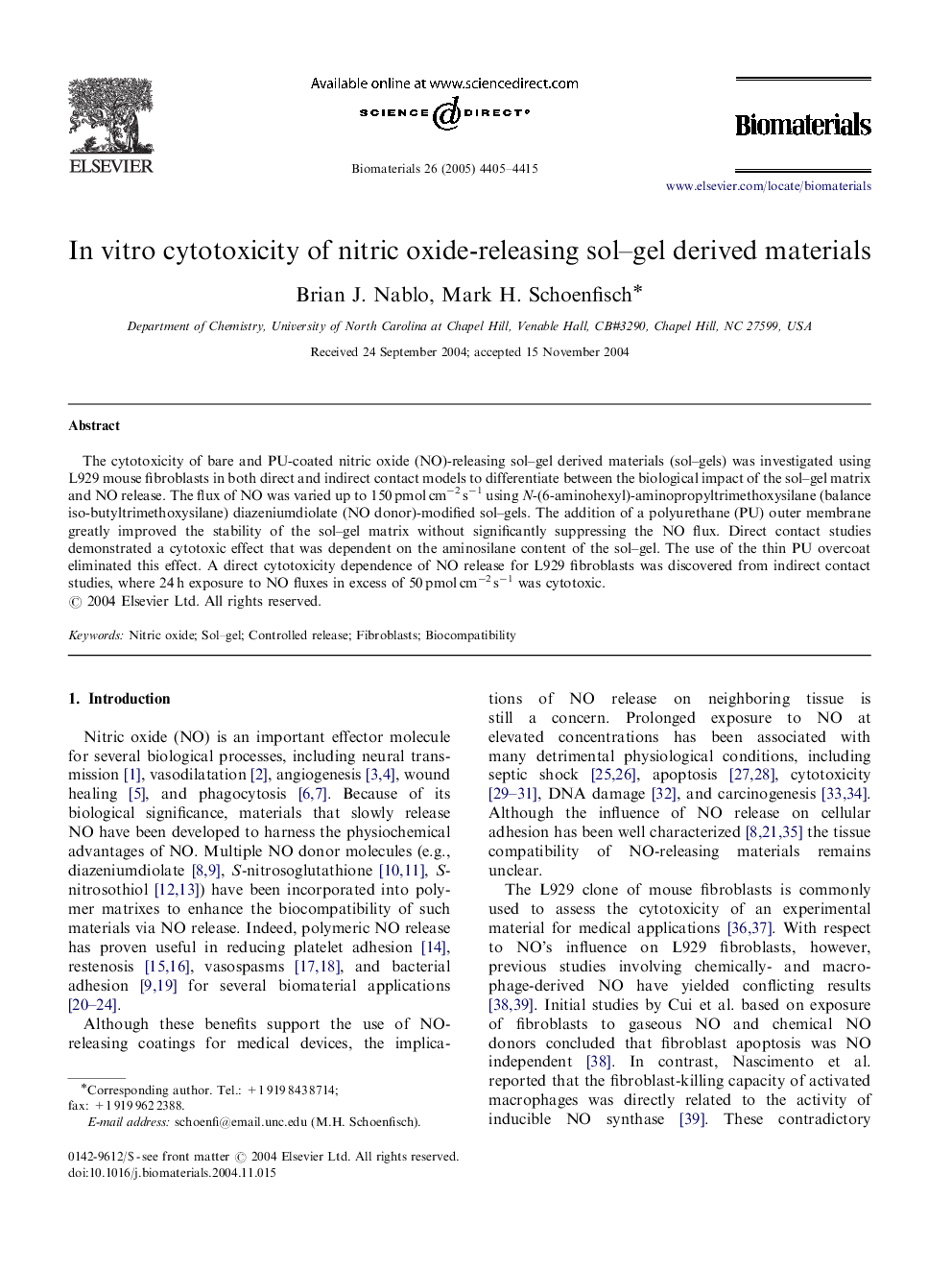| Article ID | Journal | Published Year | Pages | File Type |
|---|---|---|---|---|
| 12619 | Biomaterials | 2005 | 11 Pages |
The cytotoxicity of bare and PU-coated nitric oxide (NO)-releasing sol–gel derived materials (sol–gels) was investigated using L929 mouse fibroblasts in both direct and indirect contact models to differentiate between the biological impact of the sol–gel matrix and NO release. The flux of NO was varied up to 150 pmol cm−2 s−1 using N-(6-aminohexyl)-aminopropyltrimethoxysilane (balance iso-butyltrimethoxysilane) diazeniumdiolate (NO donor)-modified sol–gels. The addition of a polyurethane (PU) outer membrane greatly improved the stability of the sol–gel matrix without significantly suppressing the NO flux. Direct contact studies demonstrated a cytotoxic effect that was dependent on the aminosilane content of the sol–gel. The use of the thin PU overcoat eliminated this effect. A direct cytotoxicity dependence of NO release for L929 fibroblasts was discovered from indirect contact studies, where 24 h exposure to NO fluxes in excess of 50 pmol cm−2 s−1 was cytotoxic.
